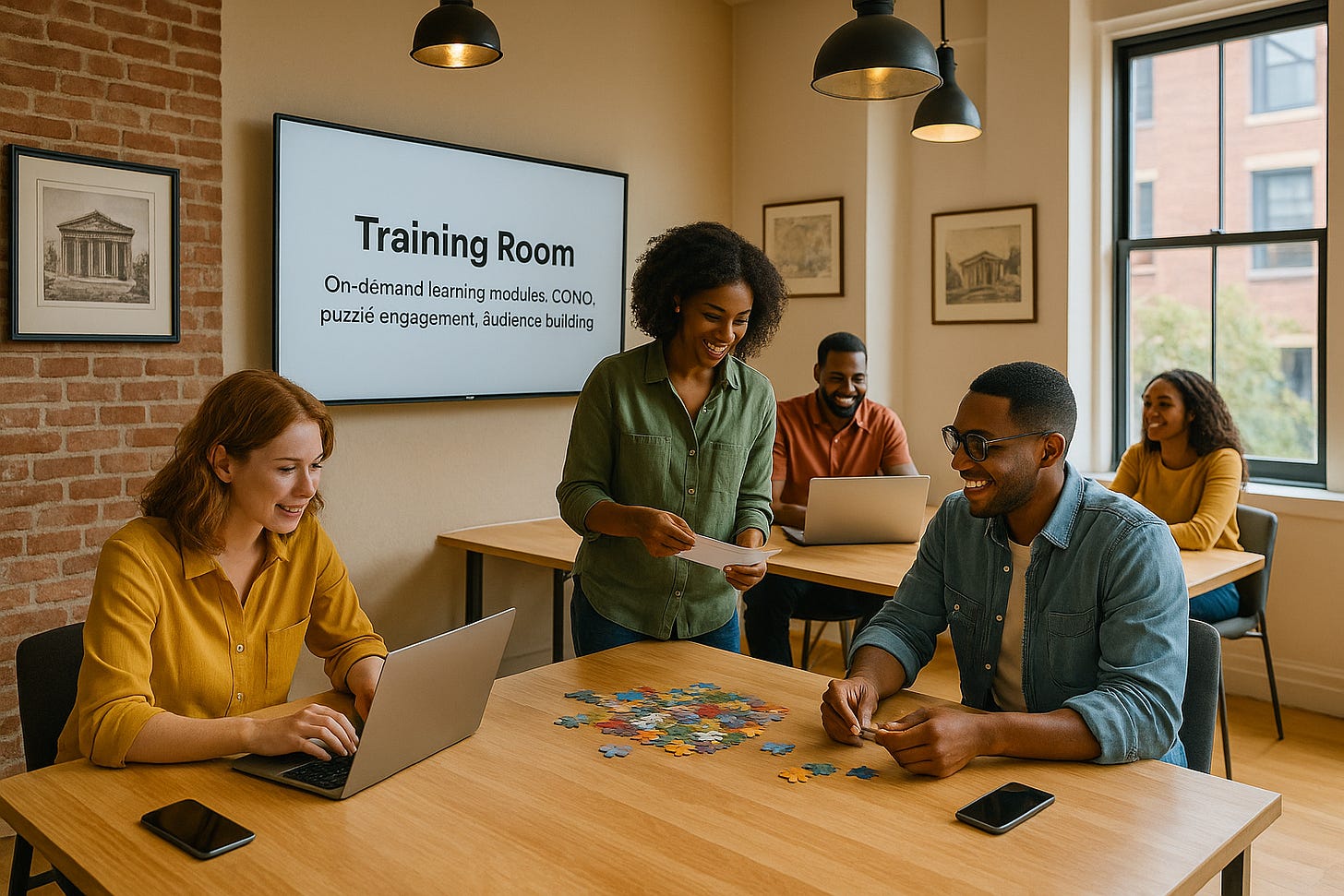Course Reflections
Funnels are the architecture of momentum. They guide people from awareness to action — not through manipulation, but through clarity and alignment. In this module, you’ll learn how to design funnels that serve both your audience and your mission.
A well-built funnel feels natural. It doesn’t push; it guides. It gives people context, purpose, and reasons to move deeper into your ecosystem. By the end of this module, you’ll understand how to create funnels that convert trust into commitment and curiosity into community
Overview
Learn to design and apply funnel strategies that connect awareness, engagement, and activation stages for lasting impact.
Understand funnel structure and flow within the ecosystem.
Identify where users enter, engage, and convert.
Use storytelling and emotional logic to shape movement.
Leverage ZoeAI to optimize funnel performance and user flow.
Key Terms
Funnel: A guided pathway that moves audiences from initial awareness to conversion or participation.
Conversion Point: The moment a user takes a desired action, such as signing up, purchasing, or contributing.
Top of Funnel (TOFU): The awareness stage where users first encounter your message or brand.
Middle of Funnel (MOFU): The engagement stage where users evaluate and interact with content.
Bottom of Funnel (BOFU): The activation stage where users commit to a final action or purchase.
Phase 1 — Learn (Core Principles)
Every Funnel Tells a Story: Funnels are narrative journeys that help users discover value at their own pace.
Clarity Beats Complexity: The simpler the path, the faster people move through it.
Emotion Drives Progress: People act when they feel understood — design for emotion, not just logic.
Measure Behavior, Not Just Clicks: Each step reveals intention and trust.
Refine Continuously: Funnels evolve through testing, learning, and real-time insight from ZoeAI.
Phase 2 — Lab (See It in Action)
Scenario: A digital creator uses a 3-step funnel: awareness through storytelling posts, engagement through a Substack newsletter, and activation through a product launch on 5thSocial. The funnel works because each step adds value, not pressure.
Observation Task: Map this funnel’s emotional flow. Identify how tone, content, and incentives guide users smoothly between stages.
Phase 3 — Build (Hands-On Exercise)
Define your audience’s entry point (social post, ad, newsletter, or referral).
Create a 3-stage funnel outline (Awareness → Engagement → Activation).
Describe what users feel and do at each stage.
Identify your conversion goal and supporting message.
Add one automation step using ZoeAI to measure and improve conversion flow.
Reflection & Challenge
What part of your current funnel creates the most friction — and what can you simplify to make the path more human?
Mini Cookbook — Building a Purpose-Driven Funnel
Define funnel objective (What transformation are you guiding?).
Outline TOFU, MOFU, and BOFU stages.
Match each stage with emotional and informational needs.
Design clear calls to action at every step.
Measure engagement and iterate weekly with ZoeAI feedback.
How ZoeAI Can Help
Visualize funnel flow and drop-off points.
Predict conversion likelihood based on behavior.
Automate follow-ups and nurture sequences.
Generate real-time recommendations for funnel optimization.
Summary
Funnels are stories disguised as systems. They work best when they respect human rhythm — guiding attention with empathy and purpose. With ZoeAI powering analytics and automation, your funnels become adaptive journeys that build trust, deepen connection, and lead people to meaningful action.
Take the quiz then jump to the next module.


